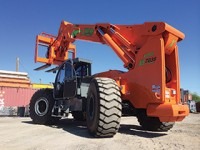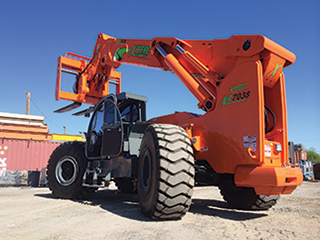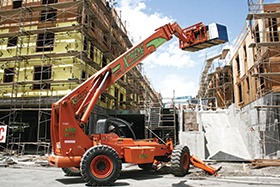Rentals
By Maureen M. Upchurch
Mason contractors of every size in every location are eventually saddled with the prospect of equipment purchases. In some cases, equipment necessary for the completion of a job will break down, be rendered obsolete, or be utilized across town or across the region on another project. This challenges masons with a very real issue: How are my dollars best spent – by purchasing new equipment or by renting?
When Rental Makes CentsBy Sean O’Halloran |
|
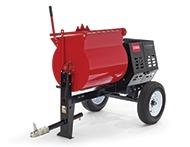 Renting may be a sensible choice over purchasing when it comes to the world of heavy equipment for a number of reasons. But, do the same rules apply regarding concrete and masonry equipment, which – generally speaking – have a smaller price tag? The short answer is “yes,” in many cases. Renting may be a sensible choice over purchasing when it comes to the world of heavy equipment for a number of reasons. But, do the same rules apply regarding concrete and masonry equipment, which – generally speaking – have a smaller price tag? The short answer is “yes,” in many cases.
Certain organizations can greatly benefit in the long run from leasing or renting equipment, and there are other organizations that may not see as much of a positive impact to their bottom lines from these options. Contractors who have multiple jobs going on at the same time will typically own a fleet of equipment, including trowels, mixers, screeds and vibrators at their disposal. For these organizations, typically, some creative logistics allow them to move equipment within their fleet from one job to another without having to enter into a rental agreement with their equipment partners. Smaller or mid-size contractors who prefer to keep a lean fleet and avoid investing in storage and maintenance of the equipment can greatly benefit from a proactive rental program. They can actively monitor projects in the pipeline, and work with a rental provider to meet their individual project needs. Maintenance, service and support Storage Ready to rent Each case is unique There’s no single correct answer, and each organization is ultimately tasked with deciding what is right for that business, based on the equipment’s potential frequency of use, the length of the project, and whether the personnel to properly maintain and store the equipment is in place. Sean O’Halloran is marketing manager at The Toro Company. To learn more about Toro’s masonry and concrete products available for rental, visit www.toro.com/rental. |
The decision to make the more significant investment of buying, or the smaller, incremental investment of renting, relies on various factors. For most, this is a business-specific decision. Scott Phillips, director of marketing for The Marshalltown Co., a family-owned manufacturer of construction equipment in Marshalltown, Iowa, says that “a business has to evaluate the long-term per-hour cost of owning, and convenience, maintenance, acquisition, cost, resale value and storage.”
Terry Hagy, president of RentalMax, the largest independent rental company in Chicago, puts it a different way: “Contractors talk about a 65 percent utilization factor; if the item won’t be used 65 percent of the time, firms are probably better off renting.”
In all, the buy versus rent question is not answered the same way by everyone and can be argued both ways. What is the long-term cost of owning versus the convenience of renting? How close is the rental yard to the jobsite? Is the time spent picking up and returning smaller pieces of equipment worth the amount of time you are away from the jobsite, not working?
While the question of renting vs buying is an economic decision, masons must consider practical factors. What are the logistics of the various projects in which your firm is involved? Do you have two projects locally and three more out of state?
According to Chris Ellis, project manager of Koontz Masonry, the use of rental equipment allows him to address his jobsite needs beyond his Lexington, N.C., backyard. Koontz is currently working on Freeman Hall at Clemson University in Clemson, S.C., among other projects. While this job is significant for Koontz, it is more than three hours in travel time from the firm’s headquarters.
“We have to bear not only the location of the project in mind when we decide to rent or use our own equipment, but we have to factor in the duration of the project and the availability of our own equipment,” says Ellis of his family-owned and operated company. The Clemson University project began in October 2014 and was completed last month. Could Koontz and its workload support the use of their own equipment on one job in a distant location for eight months? When Ellis factored in the costs associated with hauling the equipment and maintaining it at a remote location, serious questions were presented. In this case, Ellis says, “It just makes sense to rent.”
Heavy equipment manufacturer Xtreme Manufacturing Inc. of Las Vegas, Nev., echoes the thoughts of Ellis. Don Ahern, CEO of Ahern Rentals, owner of Snorkel and operating manager/president of Xtreme, says the length of time the equipment will be required on a jobsite is a leading factor on the decision to rent versus buy.
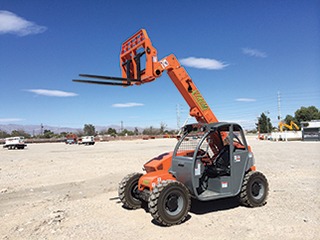
“Rental provides a good option for masons who require the equipment for a short period of time or for those who regularly change the mix of equipment on site,” says Ahern. “Masons who use the same type of equipment on long-term jobs or across multiple projects may benefit from purchasing equipment outright.”
Marshalltown’s Phillips encourages masons to self-assess when making decisions on equipment. Know your size, and know the direction in which you want your business to grow. “If you are a mid-tier firm that breaks a few bags of concrete per week, you probably don’t need to buy a concrete mixer,” he says. “If you get a large job, like a strip mall, then progressively another and another, you may want to consider buying.”
While manufacturers, like the 125-year-old Marshalltown, do not rent to masons directly, they do sell their products to the rental outlets. And, repeatedly, Phillips sees “our clients renting the same piece of equipment to the same mason, over and over. Eventually those masons will buy that equipment.”
This not only allows the mason contractor to test the product to determine if he likes it or needs it before he buys, it also allows the rental outlet to determine if the $10,000 mixer is a good investment.
Where to rent
So where would a mason contractor like Koontz rent the equipment needed to complete a project? In order to find a rental outlet, one can quickly search the internet to find convenient locations from local/regional purveyors, big box retail chains, national rental companies and more. But how do you choose the right facility for your business?
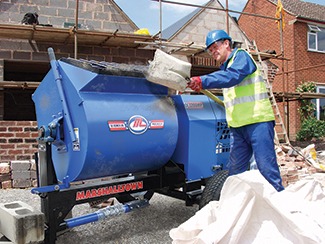
Many mason contractors select rental outlets based on criteria defined by their business needs and philosophies. Whether it be cost, quality of equipment, availability of equipment or maintenance of equipment, etc., soliciting several rental quotes at the outset proves valuable.
“Our rental choice is based primarily on price,” says Ellis. “We generally use the same rental company, because they give us the best price. But I am not loyal to them, I am loyal to the price.”
Hagy of RentalMax sees maintenance of equipment as another factor in how mason contractors select a rental outlet. “Masons choose their rental company by how they maintain their product. When the equipment breaks down, the rental outlet has to respond. If the equipment is not maintained, there is no product to rent.”
What to rent
Which equipment is rented most frequently by masons? There is vast availability in rental equipment – literally thousands of products – from troughs to telehandlers and everything in between.
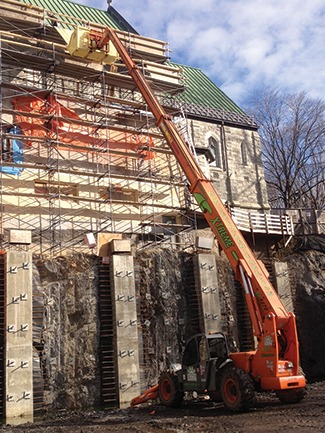
While Koontz rents only scaffolding and forklifts, RentalMax sees a diverse cross-section of products contracted in its eight Chicago-area locations. Hagy notes the rental of skid steers and excavators for site preparation as well as a hammer attachment to maximize breaking power in demolition projects. Mason contractors in the northern states will rent ground heaters to allow them the ability to pour and cure concrete 12 months per year. Coring drills and concrete grinders are other top-renting items.
With manufacturers such as Marshalltown, a significant amount of products that they manufacture in their Iowa or Arkansas locations are sold to rental outlets. These products range in price from $50 to $10,000. Xtreme produces 16 models of rough terrain forklifts, or telehandlers, ranging in price by lift capacity and reach. All of these products, valued from $87,700 to more than $870,000, are rentable. About 50 percent of those manufactured are sold to rental outlets.
When considering renting versus buying, mason contractors must be sure to be true to their businesses’ current statuses and plans for the future. While rental fees can add line items to a budget, so can fees for storage, maintenance and hauling of equipment. Ask questions that are pertinent to the core of your business, from price to utilization to maintenance to logistics and more. Get several quotes to determine which outlet is the best fit for the wants and needs of your business. Thoughtful consideration of questions like these will save time, money and aggravation.
Based in Georgia, Maureen M. Upchurch is a freelance writer with 15 years of experience in the construction industry.
